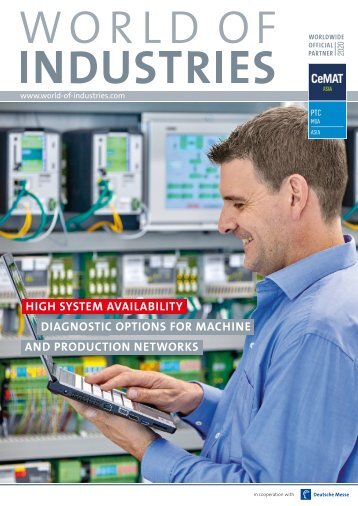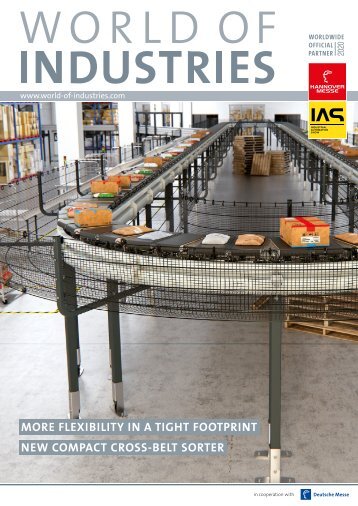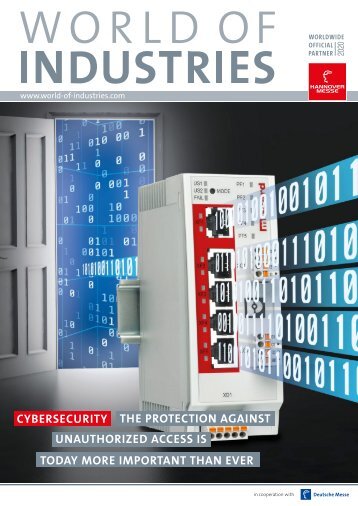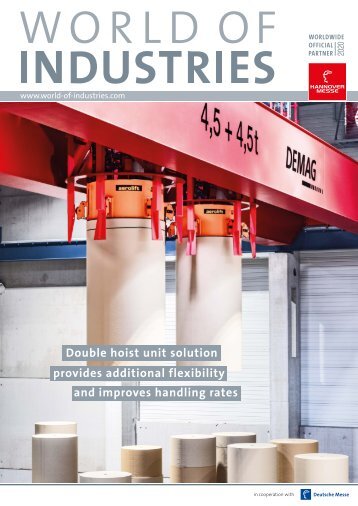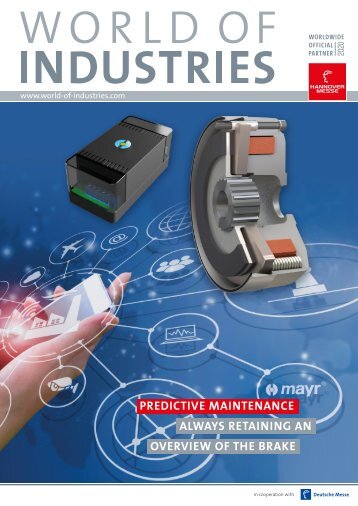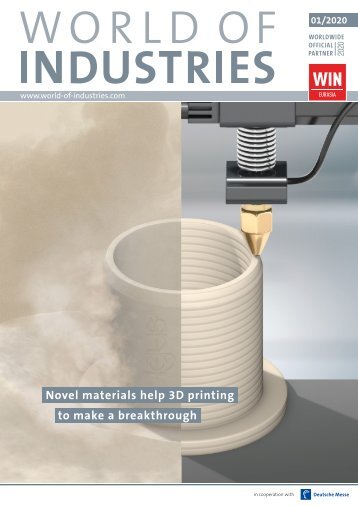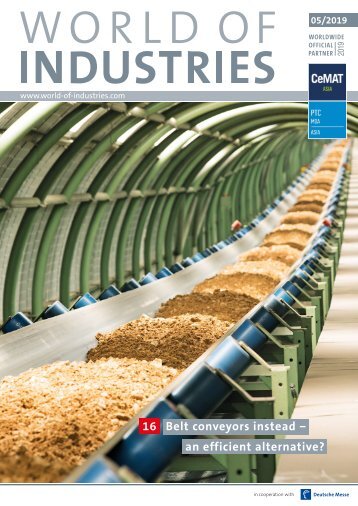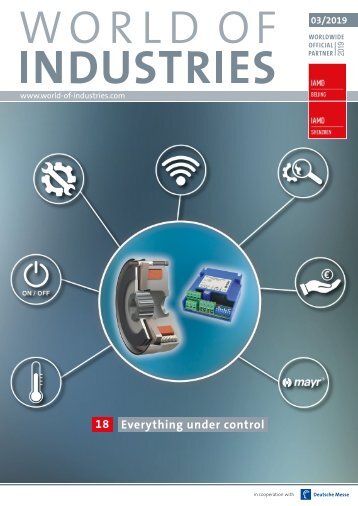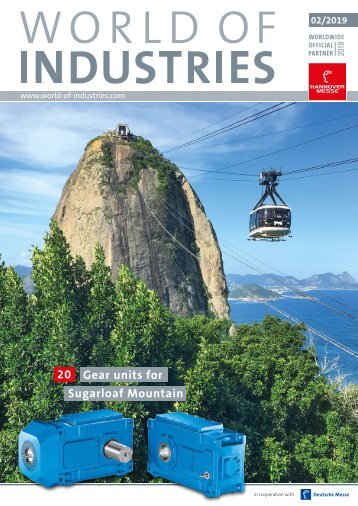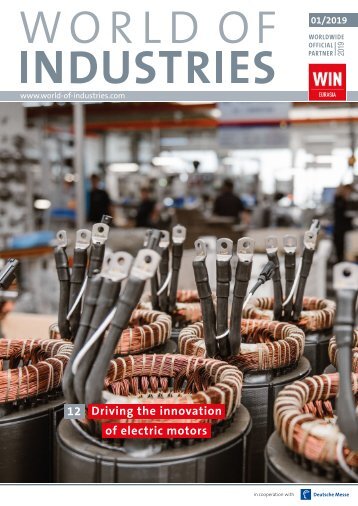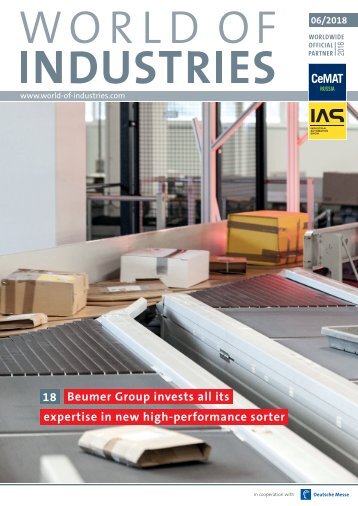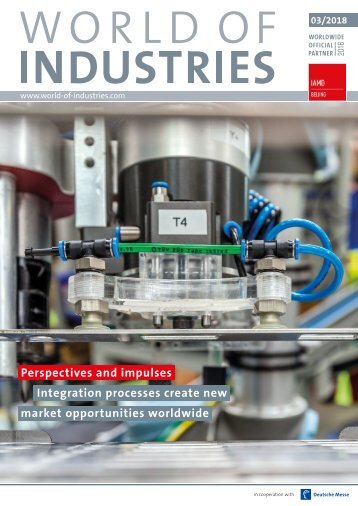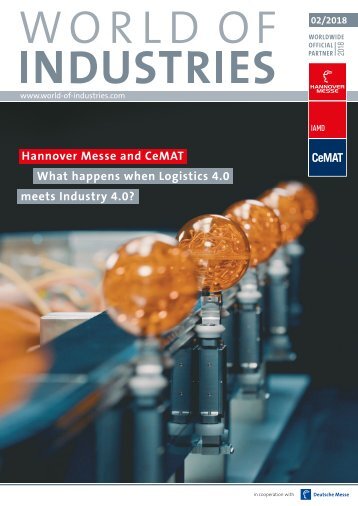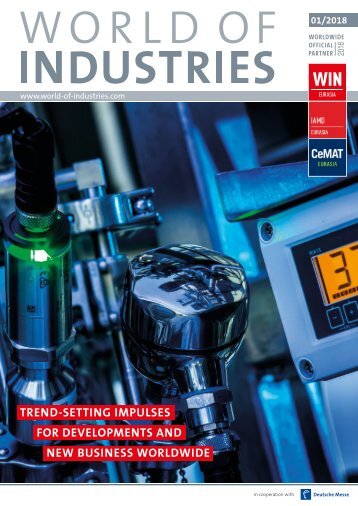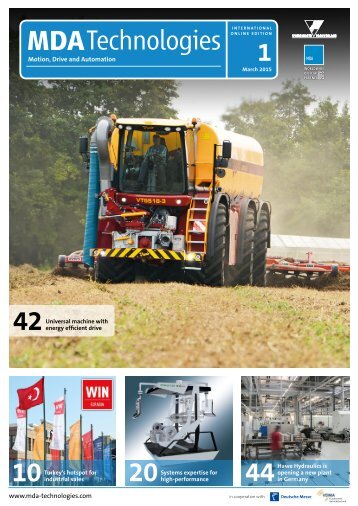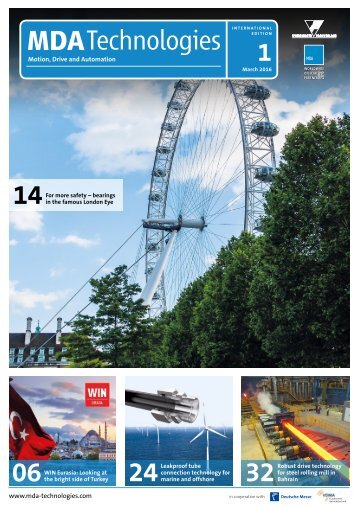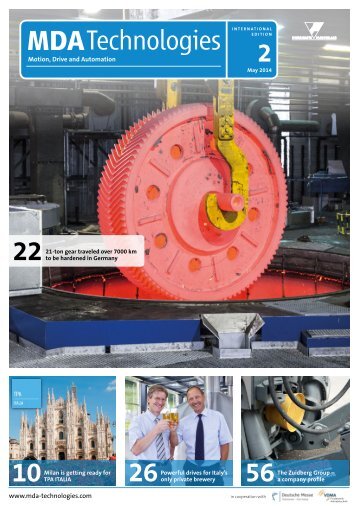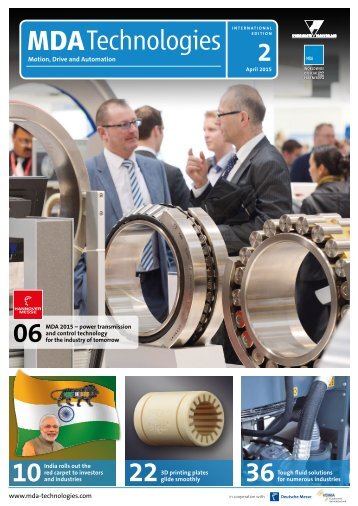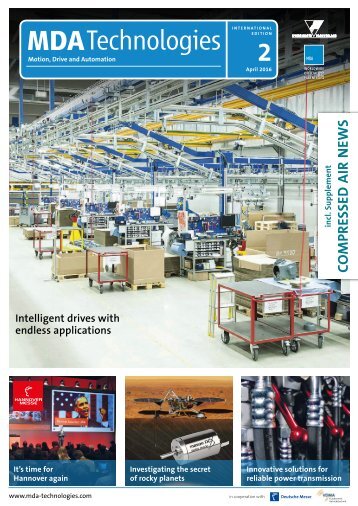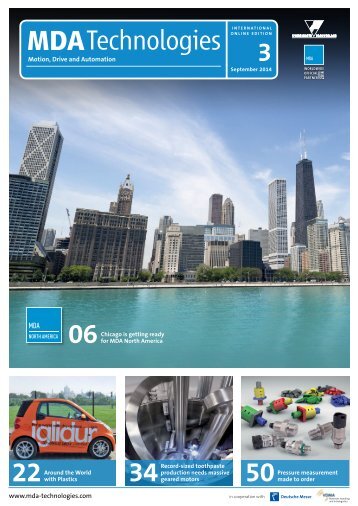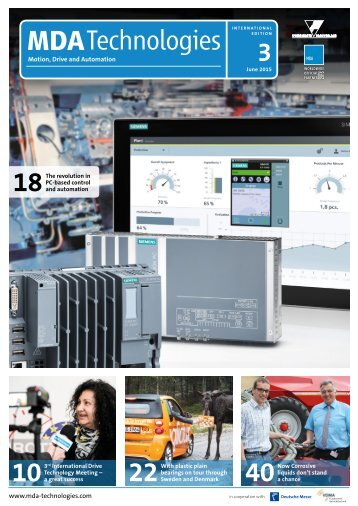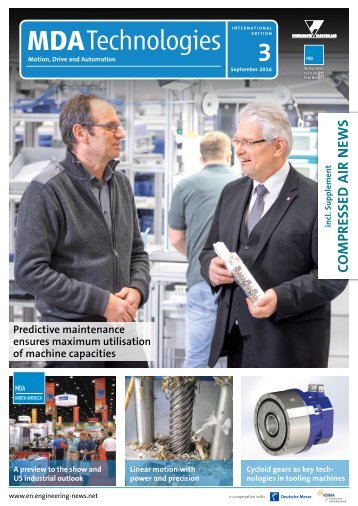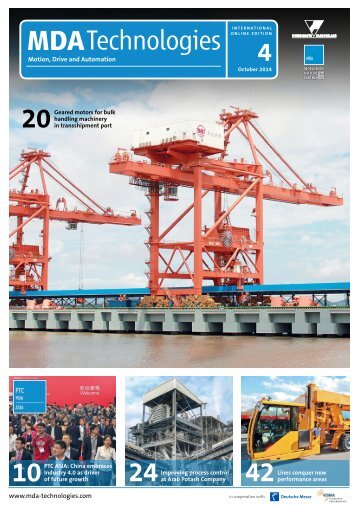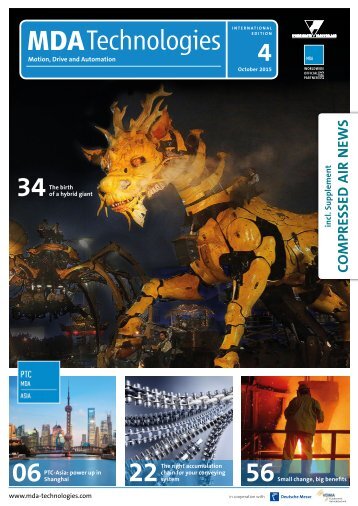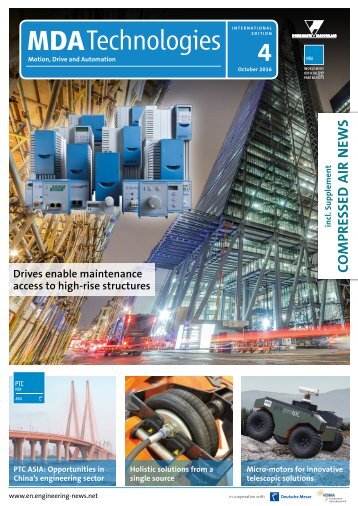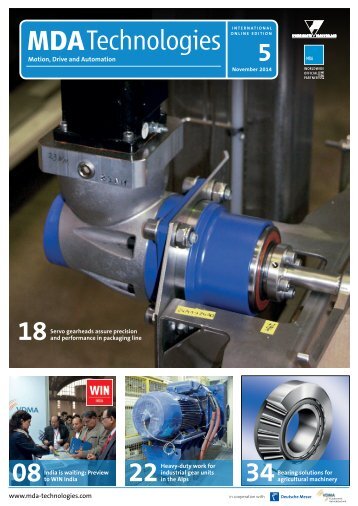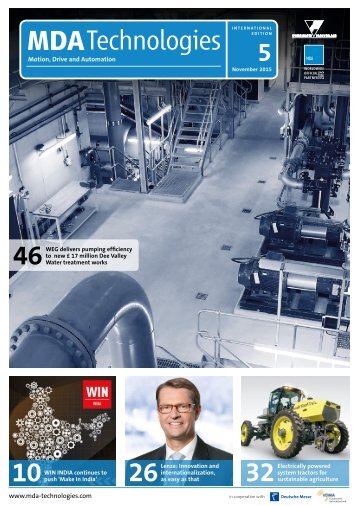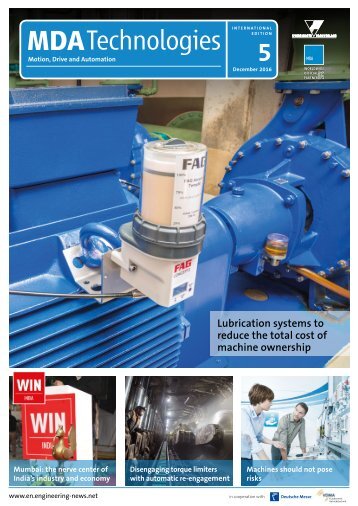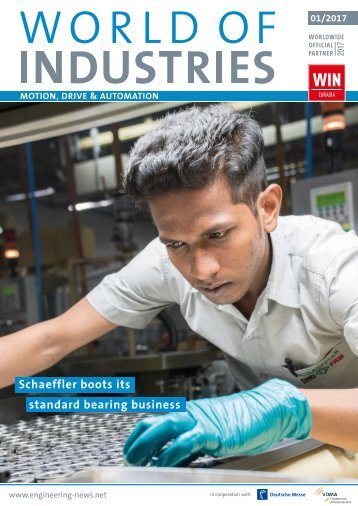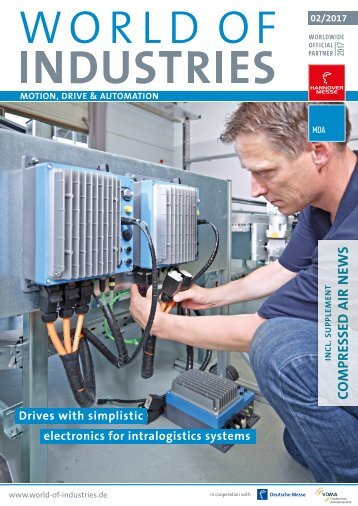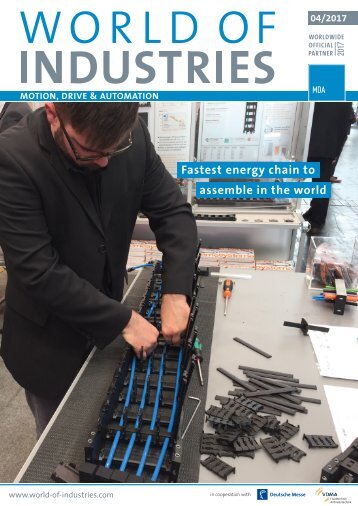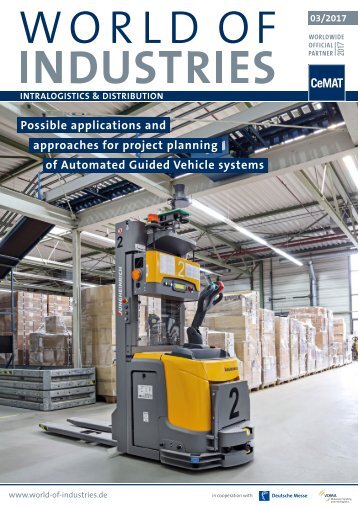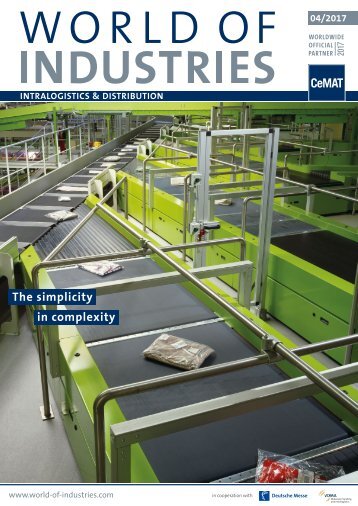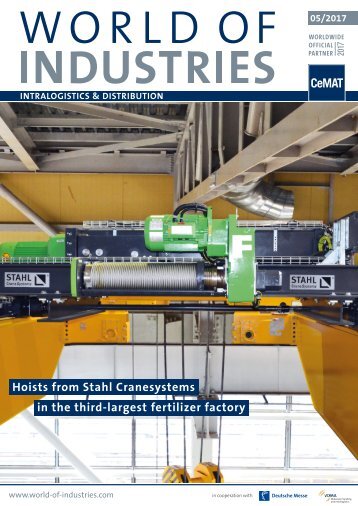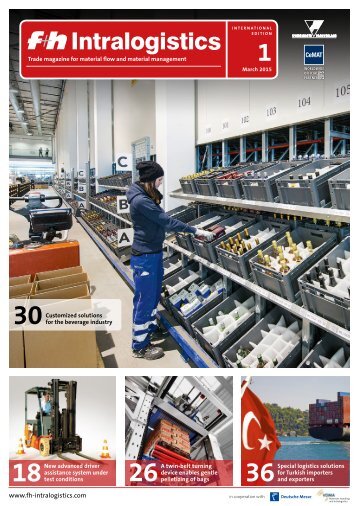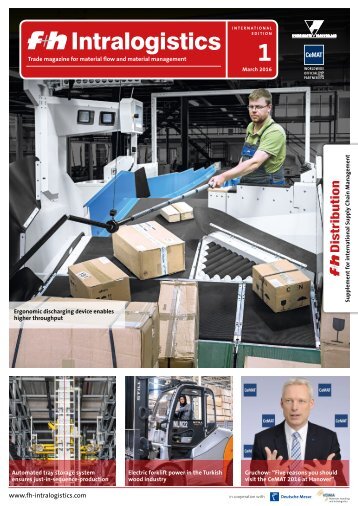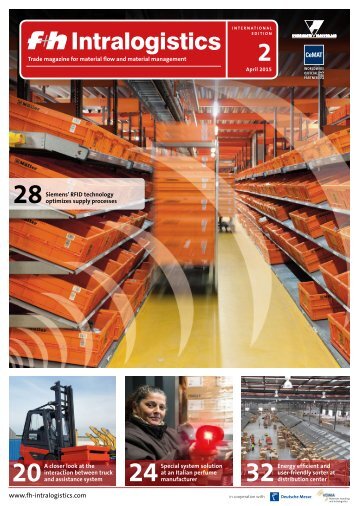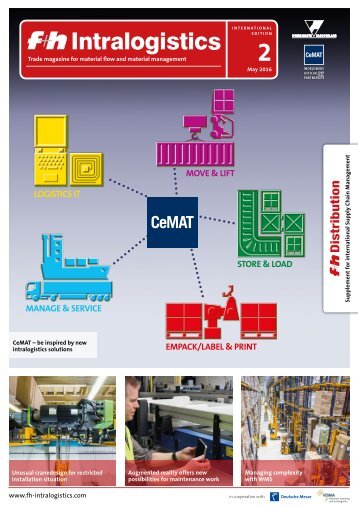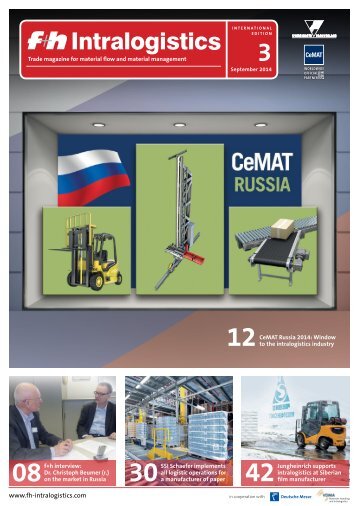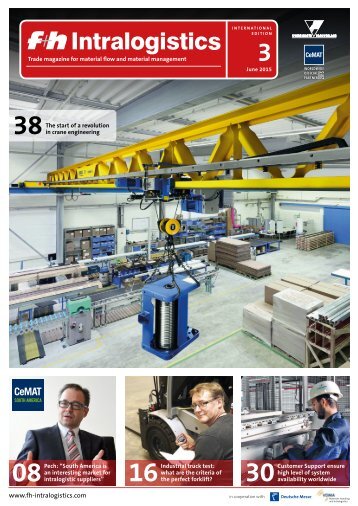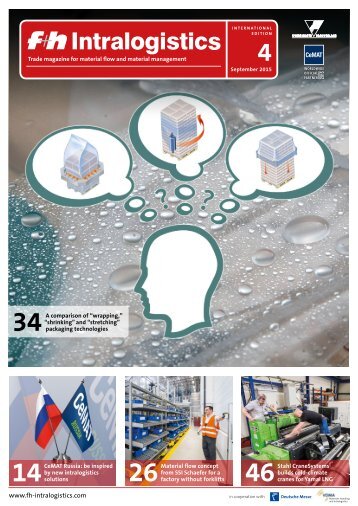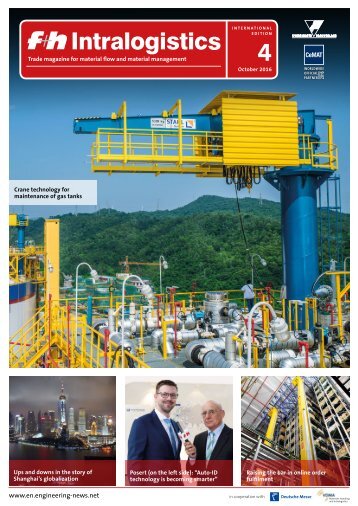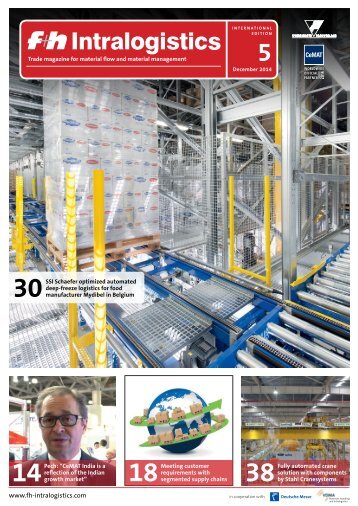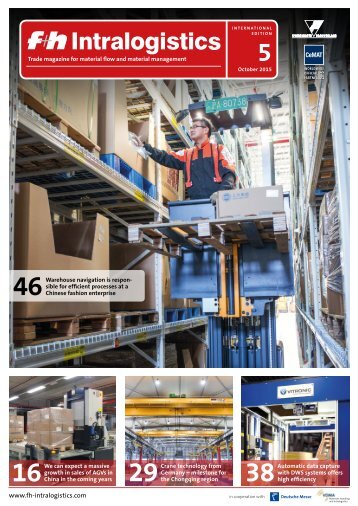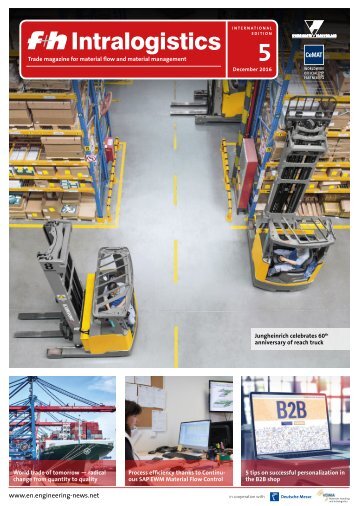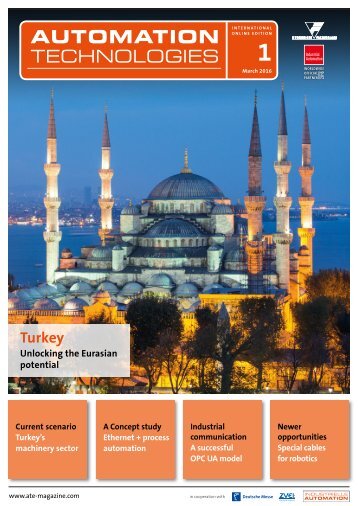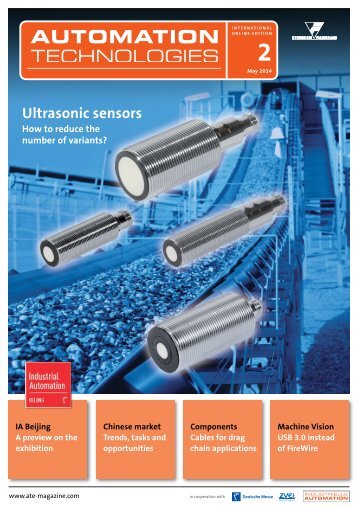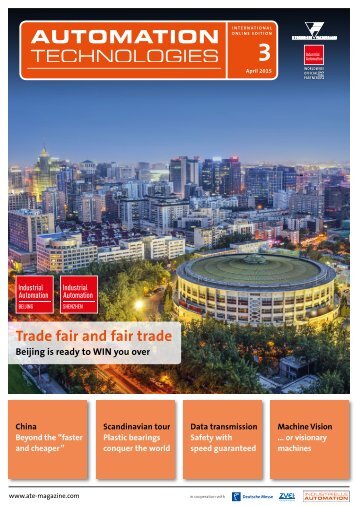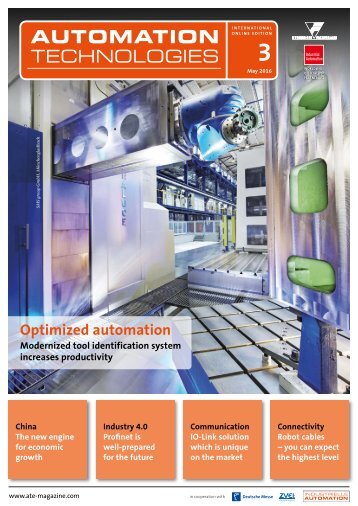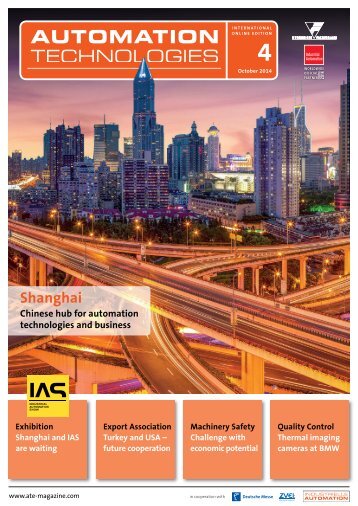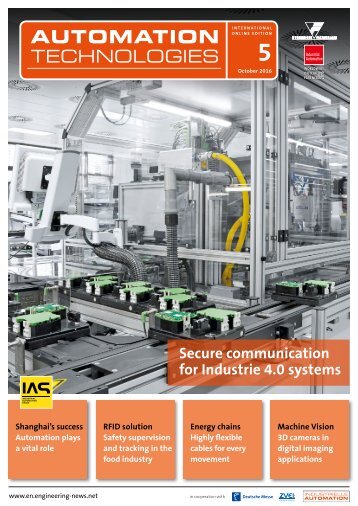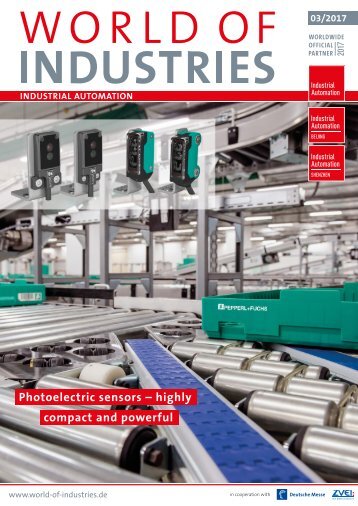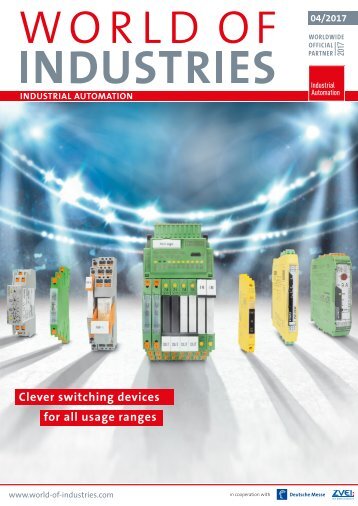WORLD OF INDUSTRIES - Industrial Automation 5/2017
- Text
- Automation
- Industrial
Chainflex cables –
Chainflex cables – developed and tested for motion COMPONENTS AND SOFTWARE Cables in e-chains – this has not always been a harmonious relationship. In the late 1980’s, damage to “flexible” or “chain-suitable” cables occurred more and more frequently when such cables were actually used in energy chains. Warehouse automated storage & retrieval systems, which were becoming faster and faster, increased the demands on cables. This was the starting signal for igus as an independent cable supplier, and since then have long established themselves as the benchmark in this market. In searching for a new solution, igus found what it was looking for in the structure of steel cables and wires braided in bundles. Wires braided in bundles differ significantly from the previous concepts of cables wound in layers, which are frequently still used today. In the case of layered cables, the cores are wound in several layers around the centre of the cable, and film or fleece is often placed between the layers. The main disadvantage of this cost-effective manufacturing method is that the cores are subjected to high tensile and compressive forces within the radius of the energy chain when it is bent. These forces act on the cores, then lead to the damaging “corkscrews” – especially in the case of long, gliding travel distances and cables with many cores. Braiding in bundles is more resilient The method of braiding in bundles used in chainflex cables is completely different to the other methods mentioned above. If there are for example 18 cores, they are not wound in several layers one above the other but are initially wound into bundles of three. The six bundles, each consisting of three cores, are then braided together to form the complete cable. This bundled braiding, which is achieved with different reverse twisting methods, ensures that the individual cores are not stretched excessively within the chain radius. What is especially important is that the whole braid structure is supported by extruded and gusset-filling inner and outer jackets, meaning that the spaces between the cores are completely filled with the jacket material. This means that the cores cannot become unwound. In the case of very extreme movements – such as torsion – other cable design concepts are used. The so-called chainflex “robot” cables are primarily used for industrial robots and other multiaxis movements and must be able to respond flexibly to extreme bending and torsional movements without being damaged. Special shield structures and outer jacket materials also help to ensure optimum cable durability. This is why robot cables need force-compensating elements, loose stranding elements, different slip planes and different shield concepts in order to ensure that they continue to function correctly, even after several million movements under torsional stress. This is because the cables used in robot technology have to repeatedly change the directions in which they move. For example, the diameter of the braid structure can actually change with torsion angle. The requirements for the shielded cable types are especially high. In order to ensure that the forces acting on the shield wires do not become too large, igus places sliding elements above and below the shields, to ensure that the shield can move freely in relation to the overall braiding structure as well as to About igus The igus GmbH is a leading manufacturer of energy chain systems and polymer plain bearings. The Colognebased family business has offices in 35 countries and employs around 3,180 people around the world. In 2016, igus generated a turnover of 592 million euros with motion plastics, plastic components for moving applications. WORLD OF INDUSTRIES – INDUSTRIAL AUTOMATION 5/2017
02 Due to braiding in bundles with multiple braiding, it is ensured that the individual cores are not stretched excessively within the chain radius 01 In the 40-foot air-conditioning containers at igus, test cables are tested continuously at temperatures of -40 to +60 °C in e-chains under realistic conditions 03 The chainflex product range includes all types of cable - from control, servo and motor cables to robot, bus and encoder cables, as well as FOC and data cables the outer jacket. The shield structure is specially adapted for this purpose. This “soft” mode of construction gives the entire cable the necessary freedom of movement, reduces tensile and compressive forces, and preventing shutdown of a machine due to a premature conductor breakage. For the “CFROBOT” chainflex cable series used in applications with torsion of up to +/- 180°, igus guarantees a service life of at least 5 million cycles or 36 months, whichever occurs first. The right materials make all the difference Braiding is very important but the right insulation and jacket materials are also vital. As igus makes and tests all the components it manufactures; it is possible to achieve the longest possible service life when energy chains and cables are optimally matched to each other. What was interesting about the many series of tests was the knowledge gained about the materials and the extent to which the materials are dependent on each other. One thing became increasingly clear in the tests conducted in the continually growing igus test laboratory: the idea of “plastics plus cables” was the key to success for long life in chains. Pursuing the concept of “plastics for longer life”, igus, the plastics specialist, concentrated on improvement and comparison of the plastics that are used in cables and e-chains and that are continually in contact with each other. In addition to external factors such as temperature, media and possible radiation, this aspect plays a central role in the interaction of chain and cable. Realistic test method in a cold chamber It is important to devise practical tests that can reliably simulate real applications. In contrast to a cold bending test, the cable in the igus tests is not wound once around a mandrel, cooled down to the temperature to be tested and then moved just once. The cables are moved continuously in an energy chain at the test temperatures to be achieved under real-world conditions. And this is done millions of times. To this end, the test cables are moved continuously in e-chains placed in an environmental container. Depending on the aim of the test, it can be carried out at temperatures from -40 to +60 °C. Here, they are subjected to continuous bending stress in combination with the temperature stress. During large-scale testing in a cold chamber with many different materials, it was found that none of the mixtures currently available on the market, not even PUR, was able to withstand the temperatures indicated on data sheets during continuous movement in energy chains. The end result was that igus is now the very first cable supplier to define three different bending and temperature ranges for the jacket mixtures used for chainflex cables. Firstly, for stationary cables, secondly for flexible moving cables in accordance with VDE or IEC standards and, thirdly, for cables moving in energy chains. After all, one thing is certain: only real long-term tests under real-world conditions provide reliable information on the service life of cables in energy chains. Knowing when something happens In order to reliably predict the service life of all its products, the specialist in moving cables in energy chains operates a laboratory for moving cables in energy chains, a laboratory that is by far the largest in the industry with a floor space of 2,750 square metres. The resilience and load capacity of the products during continuous operation, are tested on 65 different test rigs today. Since reliability depends on the exact simulation of real working conditions, test rigs are available with a wide variety of travel distances and accelerations and weather conditions. For the testing of large energy chain systems such as those used in cranes, an outdoor test site with a travel distance of up to 240 m is available. Here, components have already been tested successfully at 4 m/s and with fill-weight of 8 kg/m h over a total distance of 25,000 kilometres. These “cable torture chambers” are not ends in themselves but are used to consistently improve the designing and manufacturing procedures. And what is the benefit to the customer? The certainty that the selected cable actually functions. And functions so well that it comes with a guarantee of up to 36 months or 10 million strokes. In addition to the tests during the development of new products, igus continually monitors its manufacturing processes. Cables are taken from ongoing production according to a specific algorithm; meaning at least 20 % of all the cables manufactured. These are then evaluated in a batch test. This includes moving tests in e-chains as well as a complete structural analysis after completion of the test in an energy chain. Facts and figures In order to be always able to offer customers the most cost-effective cable that will function reliably in their application, it is important to offer a large variety of products and continually expand the product range. With igus, uncomplicated online selection of the right cables is easy (www.igus.eu/chainflex_Productfinder). Altogether, the chainflex catalogue contains 1,381 cables, 1,244 of which can supply directly from stock and deliver within 24 hours. 1,065 types of chainflex cable have UL approval and 403 types have the unique DNV GL certification for offshore applications. Photographs: igus GmbH www.igus.com WORLD OF INDUSTRIES – INDUSTRIAL AUTOMATION 5/2017
- Page 1 and 2: 05/2017 INDUSTRIAL AUTOMATION Chain
- Page 3 and 4: EDITORIAL It’s all about the conn
- Page 5 and 6: Worldwide News Applied research ins
- Page 7 and 8: Expert-talk about Protection, Licen
- Page 9 and 10: China’s trade structure and FTAs
- Page 11 and 12: ucts and systems; and with increasi
- Page 13 and 14: The position encoding system optimi
- Page 15 and 16: Amongst other things, the I/O funct
- Page 17 and 18: 01 Employees and collaborative robo
- Page 19: 01 Constructing a service network z
- Page 23 and 24: tomatically in each further represe
- Page 25 and 26: 01 The wide spectrum of pyrometers
- Page 27 and 28: Precise control and efficient cooli
Inappropriate
Loading...
Mail this publication
Loading...
Embed
Loading...

